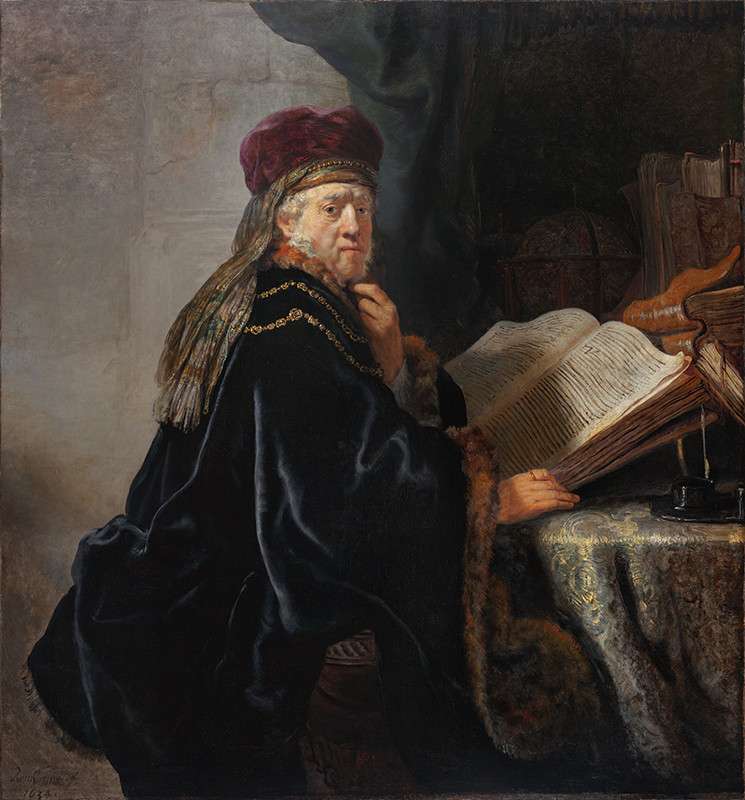
The painting bears the year 1634 in the left lower corner and it is signed with Rembrandt’s name. This was a happy year in the painter’s private life, and a successful one of his career. At the age of twenty-eight he married Saskia van Uylenburgh and started a career of a sought-after painter – at the time of portraits in particular. This one depicts the graceful face of an old scholar, who is captured in the moment of interruption of his reading. His learning is referred to in the objects on the desk, such as a globe, books, folios, and a plume and inkpot. The luxurious clothes and the gold chain over his shoulders suggest this is a well-to-do man. His identity is not known – however, Rembrandt used the same model in two more paintings, in which the man is depicted in an Oriental costume and a turban. As early as his initial works, the painter was fascinated by the world of Orient and had a penchant for strange, frequently archaic costumes. From his young days, he also liked representing old men’s figures. He found relations between old age and life experience, learning and knowledge, as those reflected in the facial expression of this scholar in the only painting by Rembrandt in the territory of the Czech Republic.
